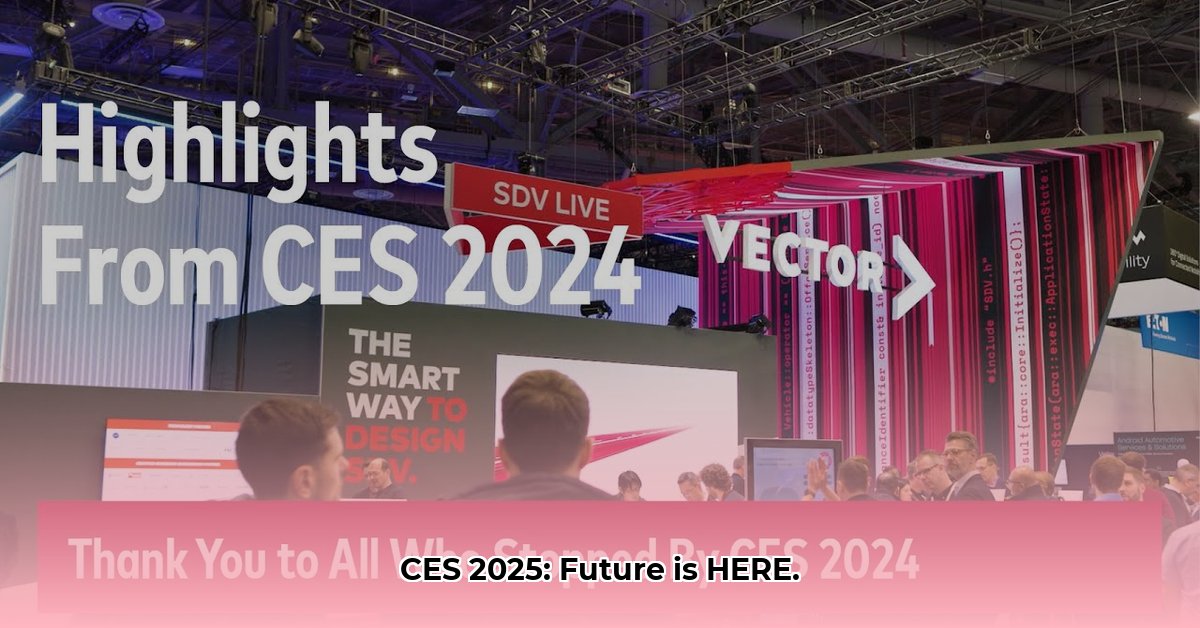CES 2025 wrapped, leaving attendees and tech enthusiasts worldwide buzzing. From AI companions to sustainable gadgets and mind-bending XR, the show offered a glimpse into the near future. This wasn’t just an incremental upgrade; it felt like a leap forward. Here’s a concise rundown of the highlights that defined CES 2025.
AI: Not Just Smarter, More Agentic
Forget passive voice assistants. Agentic AI stole the show at CES 2025, showcasing proactive digital companions that anticipate needs and manage digital tasks with minimal input. Kneron’s Edge AI demonstrated powerful on-device processing for faster, more private AI. VinAI showcased AI’s transformative impact on driving, potentially leading to safer, more efficient journeys. Experts suggest this personalized approach could revolutionize how we work and live, though data privacy remains a key concern.
Going Green: Sustainability Takes Center Stage
Sustainability wasn’t just a buzzword; it was a core value. Jackery’s renewable energy vision exemplified this shift, with companies prioritizing eco-friendly materials and energy-efficient designs. The abundance of sustainable tech honored by the CES Innovation Awards suggests this isn’t a trend, but a transformation. Will this be the tipping point for truly green tech? Further research will tell.
Vehicle Tech: The Connected Car Evolves
CES 2025 showcased vehicles as smart, connected ecosystems. Seamless device integration, personalized entertainment, real-time traffic updates, and AR navigation hinted at the future of mobility. John Deere’s autonomous agricultural vehicles demonstrated automation’s broader impact, suggesting a future where machines handle increasingly complex tasks. The direction of mobility remains an open question, with ongoing research into autonomous driving and V2X communication shaping the road ahead.
Robots: Collaborators, Not Just Machines
Collaborative robots, or “cobots,” took center stage, demonstrating their potential in manufacturing, healthcare, and other fields. Drones, too, evolved beyond aerial photography, showcasing potential for emergency response and deliveries. NVIDIA’s Jetson Thor platform offered a glimpse into a future with more advanced, possibly even humanoid, robots. This raises the question: will robots become true partners, not just tools?
XR and Spatial Computing: Blurring the Lines
Apple’s Vision Pro may have kicked off the XR revolution, but CES 2025 solidified its momentum. The show highlighted XR’s move beyond gaming, showcasing practical applications in business and education. Mixed reality for training, design, and immersive communication suggests a future where the digital and physical worlds are inextricably linked. This blurring of realities promises transformative potential, though long-term societal implications require further exploration.
Space Tech: Down-to-Earth Applications
CES 2025 demonstrated how space technology can address earthly challenges. Satellite connectivity offers a solution for bridging the digital divide, while advanced materials science, initially developed for space, is finding its way into everyday products. Could space tech hold the key to solving some of our planet’s most pressing problems? Ongoing research may provide answers.
Standout Innovations: Products That Wowed
Several products captured imaginations at CES 2025. The Seanxt Elite, built with T3000 carbon fiber, showcased the cutting edge of deep-sea exploration. CIT’s Dolphin, a nearly invisible antenna, hinted at seamless tech integration. SOLVIT System’s iSAR, a crucial communication device for low-signal areas, demonstrated technology’s life-saving potential. Hisense’s “AI Your Life” initiative underscored the integration of AI into daily life. These weren’t just gadgets; they were glimpses into tomorrow.
The Impact: A Transformative CES
CES 2025 wasn’t just a showcase; it was a turning point. Here’s a summary of the key impacts:
AI’s Evolution:
Agentic AI emerged as more than a voice assistant, becoming a proactive digital partner capable of anticipating needs and managing tasks. Data privacy and algorithmic bias remain important considerations as this technology progresses.
Sustainability:
Eco-conscious design moved from trend to core principle, with sustainable materials and energy efficiency taking center stage. The challenge lies in scaling these innovations for widespread adoption and affordability.
Smart Vehicles:
Cars transformed into connected hubs, integrating seamlessly with other devices and featuring advanced automation. The development of supporting infrastructure and navigating regulatory hurdles will be crucial for realizing the full potential of smart vehicles.
Robotics:
Collaborative robots (cobots) and increasingly sophisticated drones showcased their potential to reshape industries and enhance human capabilities. Addressing potential job displacement and fostering positive human-robot interaction will be key.
XR and Spatial Computing:
The merging of digital and physical worlds through XR and spatial computing opened up vast possibilities for healthcare, education, and entertainment. Technological limitations, privacy concerns, and cost remain challenges to overcome.
CES 2025 offered a compelling vision of the future, but it’s important to remember these technologies are still evolving. Ongoing research, development, and real-world testing will determine their ultimate impact. One thing is clear: the future is bright, and CES 2025 illuminated the path forward.




